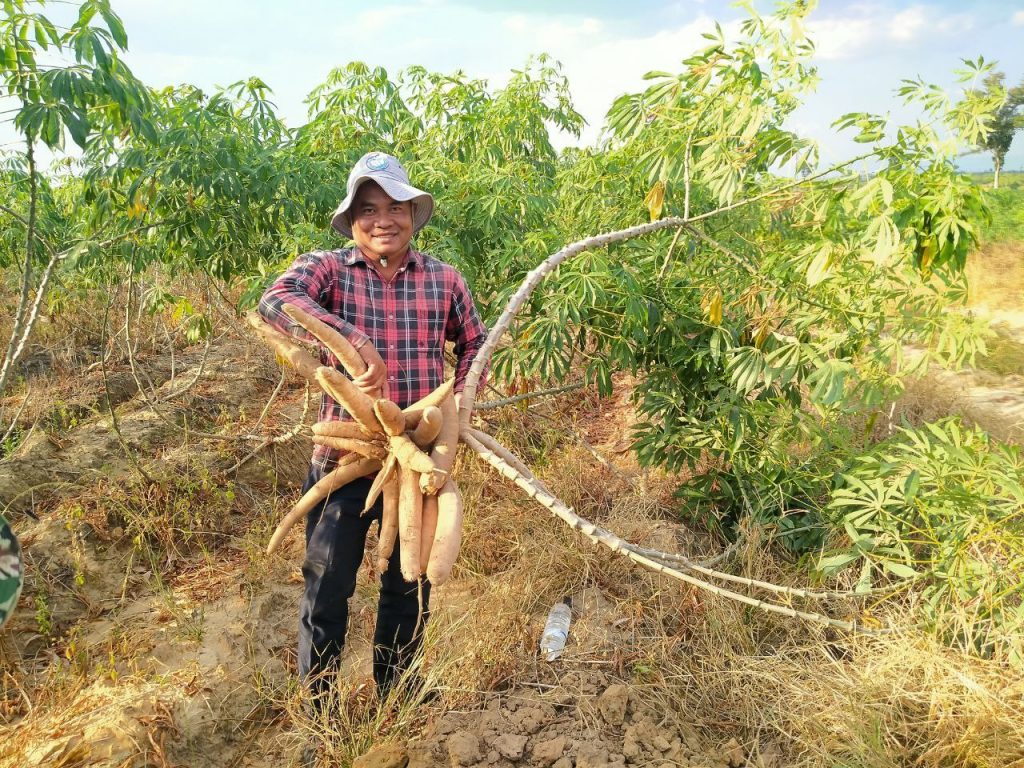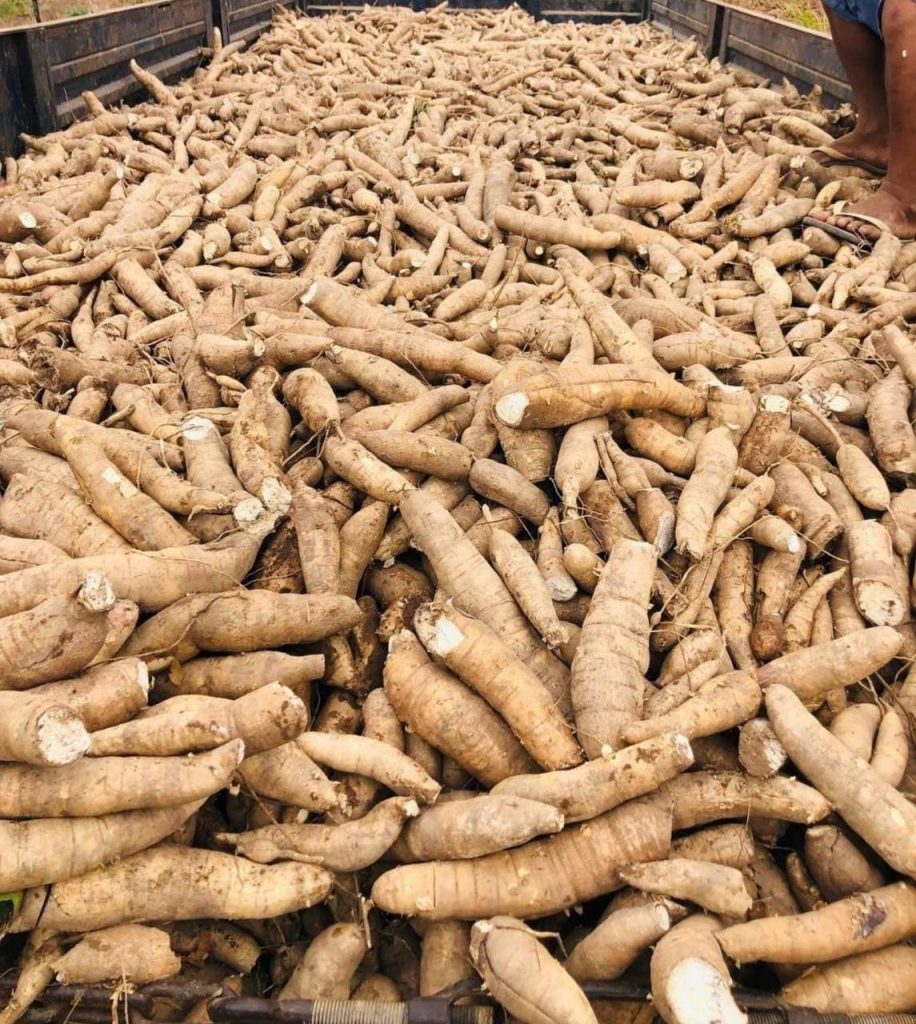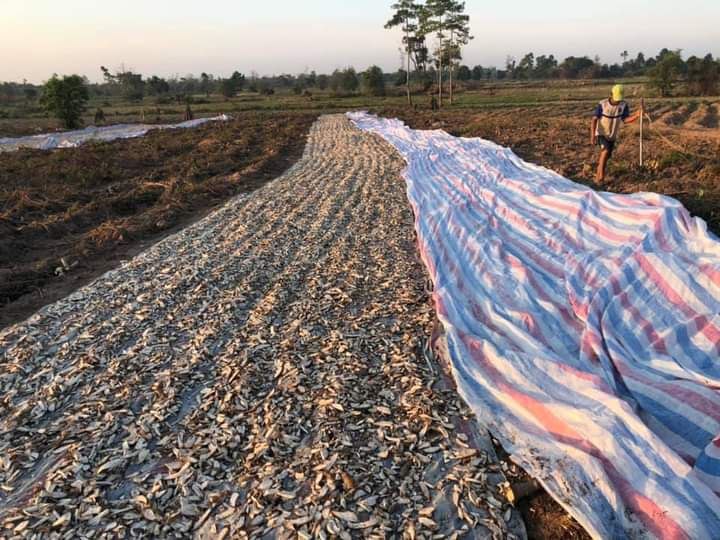Cassava is a significant contributor to the agricultural sector in Cambodia. The planting, harvesting, processing and export of cassava provides jobs and livelihoods for thousands of Cambodians. Cassava is a significant cash crop for Cambodian farmers.1 Cassava production in Cambodia has increased substantially since 2006. Despite recent shocks to the market, cassava rapidly grew from an uncommon crop to the second-most reported crop produced on agricultural holdings.2
A staple food crop among the global poor in tropical and subtropical regions, cassava is a plant that produces a root high in carbohydrates that can survive in drought and poor soil. The plant also has relatively few pest and disease problems when grown in Southeast Asia.3 Traditionally grown on a small scale by poor farmers, cassava has been historically difficult to cultivate in mass because it is grown from stem cuttings that are difficult to handle and preserve. Cultivation of cassava is also highly labor-intensive. Increased demands for cassava worldwide are expected to lead to technological changes in the cultivation of the root.4 Today, cassava is grown in Battambang, Pailin, Banteay Meanchey, Kratie, and Kampong Thom provinces. It is planted in May and harvested between November and the end of February each year.5
Cassava industry
In December 2011, Cambodia entered into a trilateral project with UNDP and China that ended in March 2015. The project included training Cambodian cassava farmers and business matching to establish connections in the cassava trade market.6 Cassava planting areas in Cambodia expanded from less than 26,000 ha in 2003 to 400,000 ha in 20117 and then to 656,868 ha in 2021. Its yield is more than 12 million tons each year, or over 18 tons per hectare.8 Cassava was exported 3.29 million tons in 2019.9 Over 12 million tons of fresh cassava were collected in 2020.10 Cambodia exported 1,780,496 tons of fresh cassava to Vietnam and Thailand along with 1,202,644 tons of cassava chips in the first nine months of 2020.11 In the first four months of 2021, up from 1.3 million tons in the same period of 2020, Cambodia exported over 1.5 million tons of cassava to international markets such as Thailand, Vietnam, China, Italy, and the Netherlands.12
The Cambodian cassava industry is completely dependent on the border markets of Thailand and Vietnam which act as cassava trade-brokers between Cambodian and international and Chinese markets. The international markets, therefore, influence cassava demand. There are three types of cassava processing plants in Cambodia including dried chip, dried starch, and wet starch.13
Cassava plant





